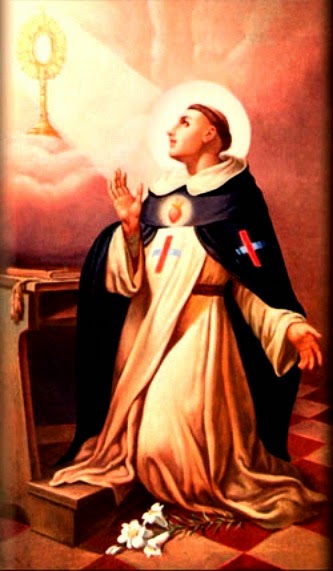Pope Saint Martin I: A Soldier for the Lord
On April 13, the Church commemorates Pope Saint Martin I. We know little of Saint Martin’s early life. We do know that he was born in Umbria, Italy of a noble family. In his youth, he served as a lector and deacon.
When Martin I became pope in 649, Constantinople was the capital of the Byzantine Empire and the patriarch of Constantinople was the most powerful Church leader in the eastern Christian world. The struggles that existed within the Church, at that time, were magnified by the close collaboration of emperor and patriarch.
Just prior to Martin’s papacy, a heresy known as Monothelitism, was creating chaos and misunderstanding in the Church. This doctrine held that Christ had only one nature—the divine nature—and that Christ had only one will. Thus, it denied that Christ was like us in all things but sin and therefore rejected our redemption. In an edict entitled the Typos, Emperor Constans II essentially accepted the heretical doctrine by forbidding discussion of the issue.
Shortly after his election to the papacy, Pope Martin I convened a council at the Lateran. One hundred five bishops attended the council, which condemned Typos and published an explanation of the doctrine of the dual natures of Christ. The council stressed that the emperor had been misguided by his advisors.
Constans II was infuriated by this insult to his authority. In response to the Pope's actions and the council, he had Martin kidnapped and imprisoned in Constantinople. Martin was given little food, was forbidden to wash, and was denied all help. When Martin arrived in Constantinople, he was insulted by the people and accused in an unjust trial, not for upholding the faith, but for being a traitor. The emperor had Martin publicly stripped of his pontifical robes, which were ripped from top to bottom. Then Martin was condemned to death.
The Church elected a new pope. Martin, exiled and abandoned, wrote that he prayed for the safety of the faithful in Rome and particularly for their new pastor. The pope wrote to a friend that he had been abandoned by all, even by the Church in Rome. The verdict of death was changed when the repentant, dying patriarch of Constantinople intervened for Martin. Martin was then exiled to Crimea, where he died.
In 655, his relics were returned to Rome. The Third Ecumenical Council of Constantinople vindicated Pope St. Martin I, by confirming in 681 that Christ had both a divine and a human will.
While the six years of his life during which he served as pope were difficult and demanding, multiple miracles have been reported at his tomb in death. Pope Martin I is regarded as a courageous saint, who altered the course of history by confronting heresy and worldly power. Saint Martin boldly proclaimed Church teaching at a time when it was treacherous to do so, living the virtuous life of a soldier for the Lord.





Comments
Post a Comment
Comments are moderated and are published at the blogger's discretion.